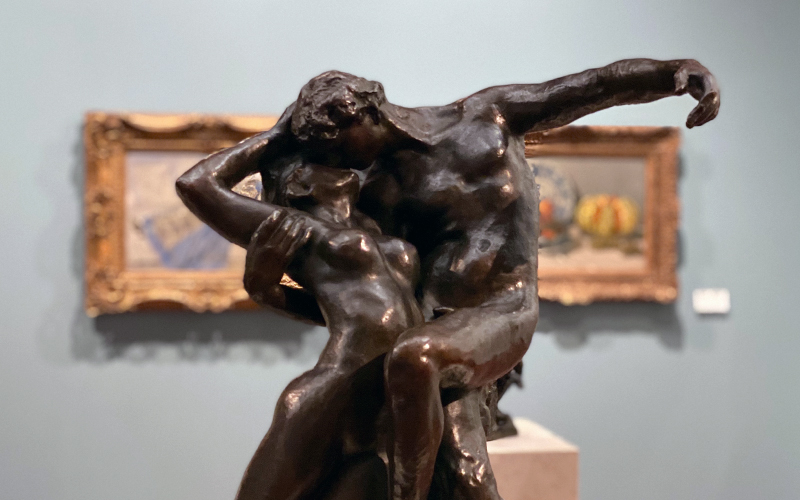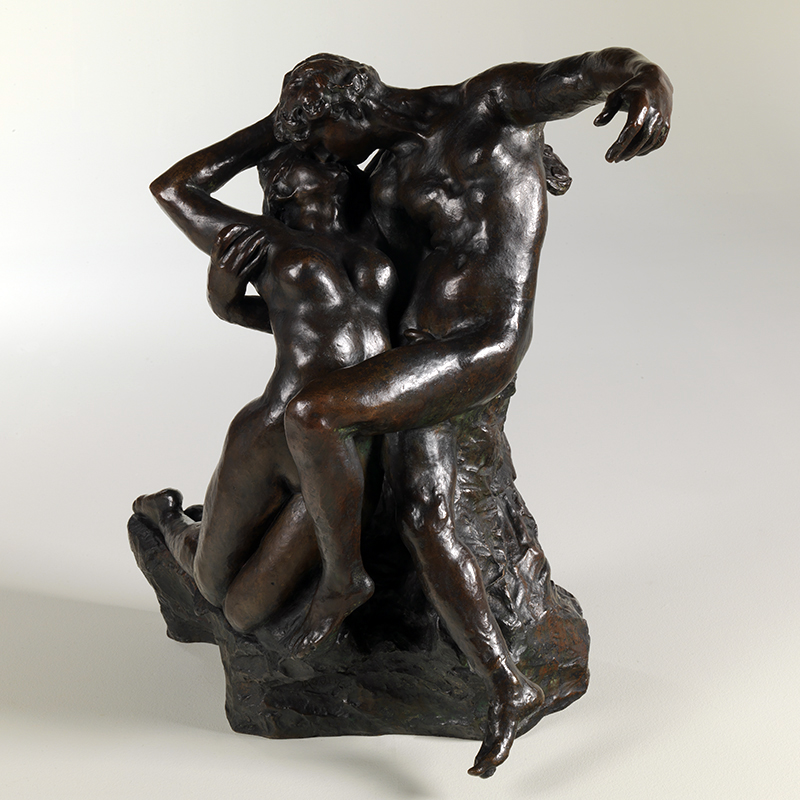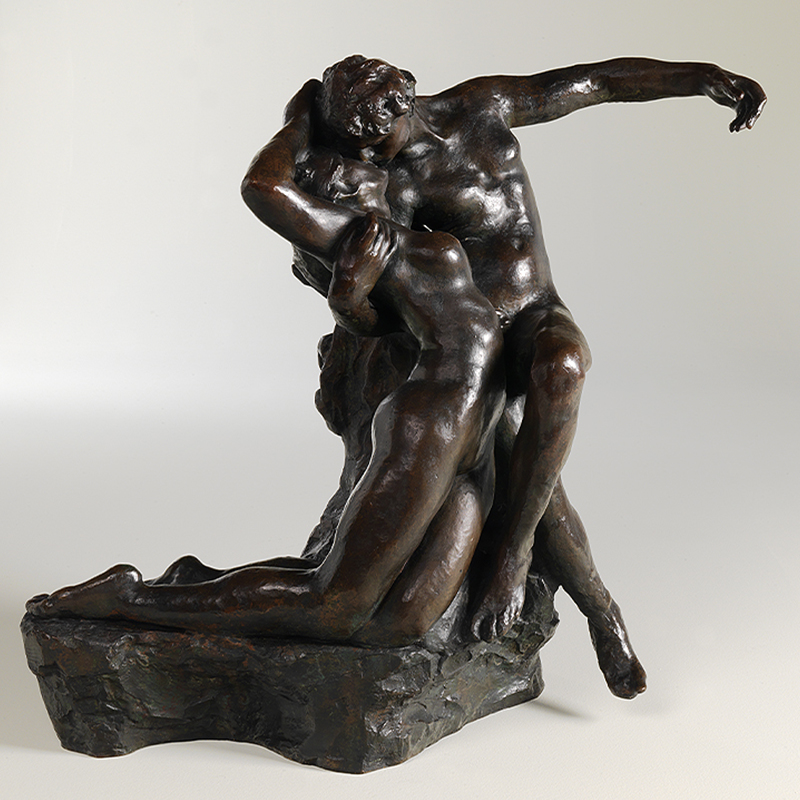The Eternal Springtime

This pair of entwined lovers originates from the episode of the Divine Comedy which portrays the medieval passion between Paolo Malatesta and Francesca da Rimini. The sculptural group Eternal Springtime was taken from a monumental work commissioned to Rodin, an entrance for the future Paris Museum of Decorative Arts inspired by Dante’s work.
Francesca was the daughter of the lord of the city of Ravena, Guido da Polenta, who was at war with the Malatesta family, from Rimini. To ensure a peace accord between the two families, Francesca was promised to the Riminis’ first-born son, Giovanni Malatesta, who, although cultured, had been born with a physical deformity. As fate would have it, Francesca fell in love with her husband’s younger brother, Paolo Malatesta, with whom she had a torrid romance. However, when Giovanni discovered their adultery, he killed them both with his own hands.


Rodin conceived this sculpture at the end of the 19th century, at a time when he himself was having an affair with French sculptress Camille Claudel who, having posed for several of his works, became his assistant, lover and muse. Nevertheless, the couple’s passion, both physical and intellectual, was short-lived, as Rodin never put an end to his marriage with Rose Buret.
Camille would end her life in ruin; however, she would always be known as the great love of Rodin’s life. The end of their relationship inspired the work The Mature Age, by Claudel, which is said to be autobiographical, portraying a figure – Rodin – between his older wife and younger lover, who kneels at his feet, as if pleading with him.
A Collection of Stories
On a weekly basis, we shared a story around Calouste Gulbenkian’s collection. This section was created in 2020, which is why the articles refer to the Calouste Gulbenkian Museum collection as the Founder’s Collection.
Other stories